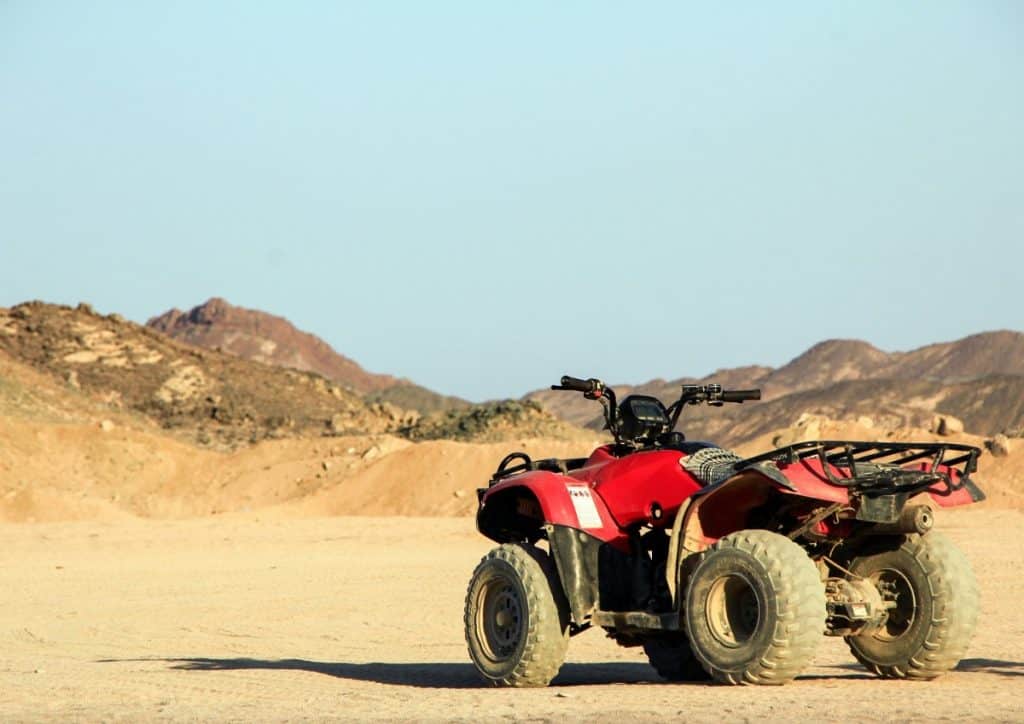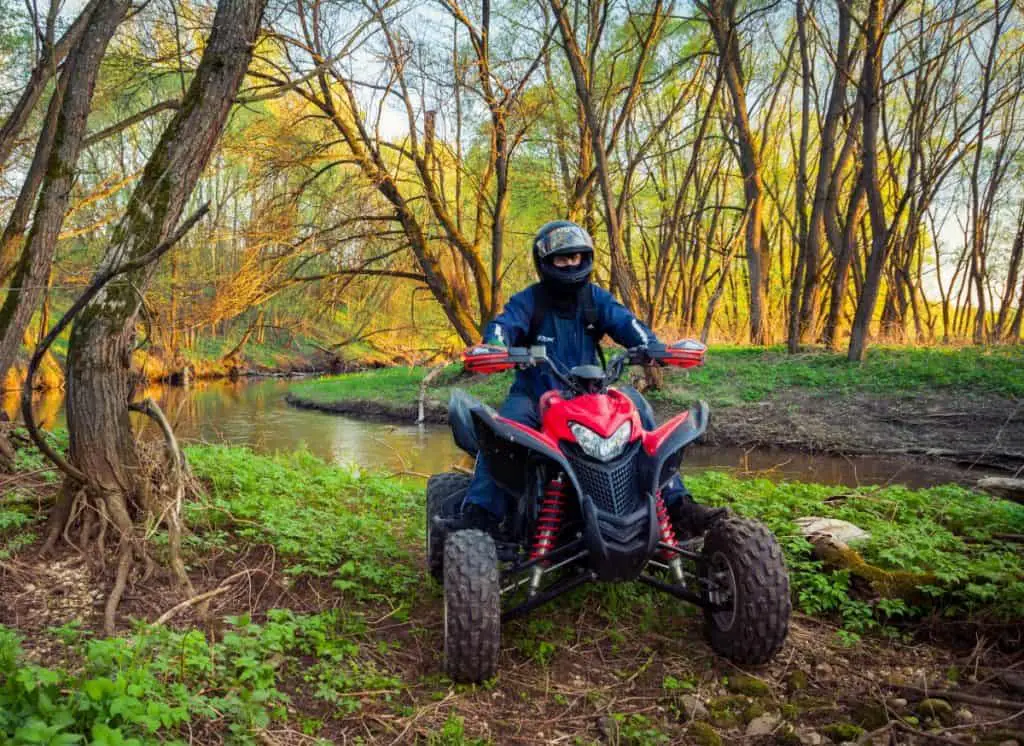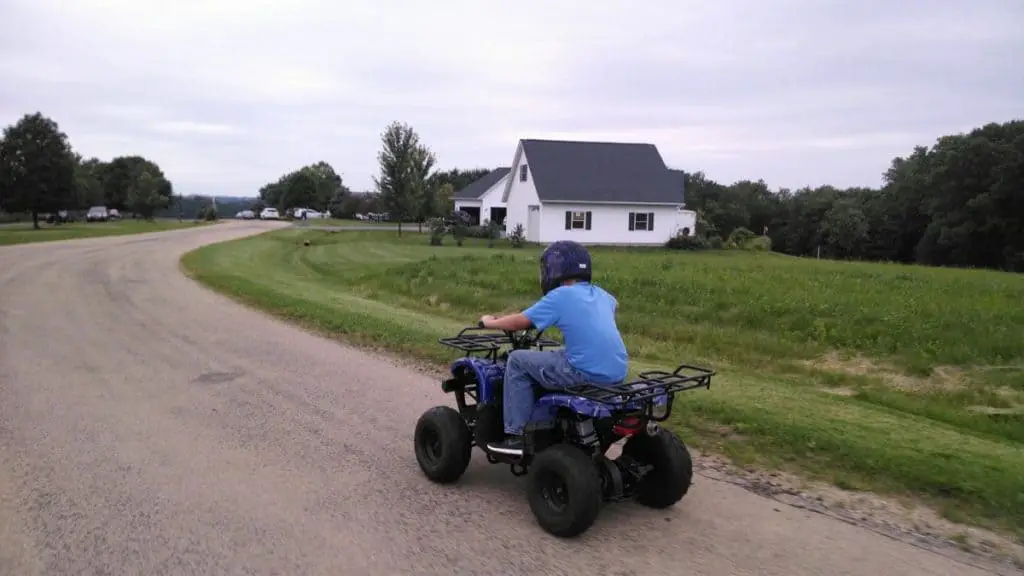I’ve had a few ATVs over the years, and I generally warm them up beforehand, as someone told me it was a good idea when I first got my ATV. But, I was curious if you actually need to so I looked at the owner’s manual for the most popular ATV brands, and here’s what I found.
It’s advised to always warm up your ATV for a few minutes according to the owner’s manual of popular ATV brands such as Polaris, Honda, and Alterra. It’s also recommended to start it on a flat level surface and in a well-ventilated area.
Today, I will explain why it’s recommended to warm up your ATV, how to start it correctly when it doesn’t turn over on the first try to protect the engine, whether it’s bad to rev a quad, and if it damages the engine to hit the rev limiter.

How Long Should You Let Your ATV Warm Up?
When you want to start your ATV it’s generally because you have somewhere to be or something to do. You may not be in a rush, but you don’t want to waste time unnecessarily. So, it’s important to know how long you should let your ATV warm up.
In general 3 to 5 minutes is long enough to warm up your ATV engine. This is what is recommended in the owner’s manuals of the most popular ATV brands. Some simply say warm it up and don’t give a specific time frame.
Whereas others such as the Polaris Sportsman 2020 say:
“Operating the vehicle immediately after starting could cause engine damage. Allow the engine to warm up for several minutes before operating the vehicle.”
(source: Polaris Sportsman 2020 – 450 and 570 Owner’s Manual)
When you start driving it sooner than that the engine oil hasn’t had time to spread throughout the engine. This can cause additional wear and tear on the engine. If done consistently it will lower the life of the different components inside the engine.
As you may know, car fumes are toxic in concentrated amounts. Therefore, it’s important to start your ATV where there is good airflow. Because as you’re warming it up for 3 to 5 minutes there can be a build of exhaust in a confined space.

Don’t start your ATV on a hill or walk it backwards to the bottom
It’s advised in the owner’s manuals not to start an ATV when it’s facing uphill or downhill. They say you should always start it on a level surface. The fluids in the engine can be low, and the chances are they’re not completely full. When that happens the fluids will tilt to one side and may not draw through the openings where they should.
Instead, it’s advised to do what is called a ‘K’ turn. I’ll give a brief outline here but exactly what gear to put it in, and whether to change it out of 4×4 varies by model so you should always refer to the owner’s manual for your specific ATV before doing it.
Generally, if facing uphill, stand on the left side and turn the steering hard left, or if you’re standing on the right of the ATV turn the steering hard right. Then hop back on, start the engine with the parking brake on, and the gear in the forward position. Release the parking brake and slowly accelerate to turn it back so it’s facing flat to the hill, not uphill or downhill.
How long to turn the ignition to start it and how long to wait if it doesn’t
It’s best not to turn the key to start your ATV for more than 5 to 8 seconds. Doing so creates additional wear on the starter motor which means it will need to be replaced sooner. If it doesn’t start on the first try you should wait for 5 to 15 seconds before attempting to start it again.

Is It Bad To Rev a Quad?
Revving an engine is loud and in some ways quite fun. Many people wonder whether it’s bad to rev a quad. I looked into it and here’s what I found.
Generally, it is bad to rev a quad. Revving a quad causes increased wear and tear on the engine. Keeping the revs at the maximum it can go for a sustained period of time can also blow the engine. The best way to rev the engine is to keep the revs as low as possible for the speed.
There is a term for revving the engine known as ‘money shifting’ this is where you rev it all the way to the maximum and then shift the engine. The reason it’s called money shifting is that it uses much more fuel and causes more wear and tear on the engine. Therefore, it costs more money.
It can also cause a loud backfire. However, this is generally a sign that your spark plug – most ATVs only have one spark plug – is worn or dirty and needs to be replaced. Many people wonder how often you need to change the spark plug on an ATV.
I explained this in detail in this article about when you should change an ATV spark[link] plug by looking at when it’s recommended to do so for the most popular ATV models to give an average.
Does Hitting the Rev Limiter Hurt the Engine?
There is what’s called a rev limiter. This allows an engine on a manual ATV to not rev past a maximum RPM’s to protect the engine. But, does hitting the rev limiter hurt the engine?
Overall, hitting the rev limiter does hurt the engine. The more it’s done the more wear and tear will occur on the engine. It also burns more fuel, as the engine is not working efficiently. It’s best practice not to hit the rev limiter where possible.
On automatic ATV’s it’s not possible to hit the rev limiter unless you turn the accelerator to the maximum all at once. Even when this is done, some models will shift earlier, before it reaches the maximum revs.
Virtually all ATV manuals recommend accelerating slowly. So, this means you should not turn the throttle to the maximum as you accelerate. It’s very unsafe and can cause an accident, as well as, causes more wear and tear on the engine and consumes more fuel.
